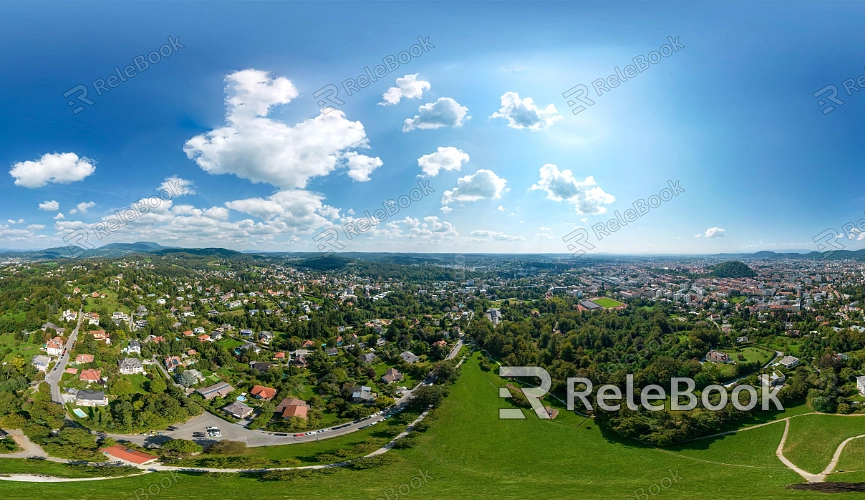Why is My Texture Not Working on Realtime Landscaping 3D
In game development, virtual reality, and architectural visualization, real-time rendering plays a crucial role in bringing digital environments to life. To achieve realistic scenes, designers often rely on textures to enhance the detail and surface qualities of 3D models. However, many designers encounter issues where their textures fail to display properly in real-time landscapes. This can be caused by several factors. As a 3D modeling and rendering artist, I’ve faced this issue numerous times and have accumulated some helpful tips and solutions. In this article, I will share my experiences to help you understand why your textures might not be showing up and provide effective solutions to resolve these issues.

1. Texture Resolution and Compression Issues
One of the most common issues that can prevent textures from displaying correctly in real-time landscapes is improper texture resolution and compression settings. For real-time rendering, textures must balance both high detail and file size to ensure performance. Here are some common problems:
High Texture Resolution: Using textures with excessively high resolution can lead to performance issues. Game engines like Unity or Unreal Engine may automatically reduce texture quality or fail to display the texture altogether due to memory limitations.
Incorrect Compression Settings: The compression method used for texture files directly impacts rendering quality. If the wrong compression format is used, textures might appear blurry or have color distortions. Common formats like DXT or ASTC may cause problems if not properly selected.
To avoid these issues, it's essential to choose appropriate texture resolutions and use suitable compression formats to maintain both performance and visual quality.
2. UV Mapping and Topology Issues
Another frequent cause of textures not displaying correctly is improper UV mapping and topology. UV mapping is the process of unwrapping a 3D model's surface into a 2D plane for texture application. If the UV mapping or the model's topology is flawed, the texture won’t be mapped correctly onto the surface. Specific issues include:
UV Seams and Stretching: When unwrapping UVs, improper seam placement or excessive stretching in certain areas can result in distorted or unnatural-looking textures.
Uneven UV Density: Uneven distribution of UV space can cause certain areas to lose texture detail or appear stretched. Ensuring a consistent and balanced UV layout is vital for proper texture application.
To avoid these issues, double-check your UV unwrapping and ensure there are no seams or stretching, and that the texture space is evenly distributed across the model.
3. Engine Settings and Texture Import Issues
Different game engines and real-time rendering software have specific rules for importing and handling textures. If textures are not correctly imported or the engine settings are incorrect, the textures may fail to display. Common engine-related issues include:
Unsupported Texture Formats: Some game engines may not support certain texture formats or require specific import settings for textures to be recognized correctly. For example, Unreal Engine and Unity have different texture format compatibility, so it’s crucial to check file types during import.
Incorrect Texture Paths: If the texture file path is set incorrectly, the rendering engine may fail to locate and load the texture, resulting in it not being displayed.
Make sure you’re using compatible texture formats and double-check the texture path settings to ensure the texture imports correctly into your engine.

4. Shader and Material Settings Issues
In some cases, textures fail to show up due to incorrect shader or material settings. Each material has different properties that affect how textures are rendered:
Shaders Not Supporting Texture Types: Some custom shaders may not support certain types of textures (e.g., normal maps or displacement maps), causing them not to display correctly.
Improper Material Settings: Material properties such as reflection, glossiness, or transparency might not be compatible with the texture, causing rendering issues.
Checking the material properties and ensuring that the shader supports the texture type is crucial in fixing texture-related problems.
5. Lighting and Render Settings Issues
In real-time rendering, lighting plays a significant role in how textures are displayed. If the lighting is insufficient or improperly configured, the textures might not show their full detail. Common lighting issues include:
Insufficient or Excessive Lighting: Too little light can make textures appear too dark, while too much light can distort or wash out the texture.
Conflicts Between Lightmaps and Textures: In some scenes, real-time lighting may conflict with precomputed lightmaps, affecting how textures are rendered.
Adjusting the light intensity, angle, and material properties for proper lighting can greatly improve how textures appear in your scene.
6. Real-Time Rendering Engine Performance Limitations
The performance of your real-time rendering engine can also impact how textures are displayed, especially in large-scale scenes. In such cases, the engine might automatically lower texture quality to improve rendering speed, sacrificing detail in the process. This can cause textures to appear blurry or distorted.
To address this, consider optimizing texture resources in your scene and using Level of Detail (LOD) techniques to ensure the best texture quality is maintained at various distances from the camera.
When dealing with textures that aren't displaying correctly in real-time landscapes, it’s essential to check texture resolution, UV mapping, engine import settings, and material/shader configurations. By optimizing these elements, you can ensure your textures display correctly and perform well in real-time rendering environments. I hope this article helps you understand some common causes behind texture display issues and provides effective solutions.
If you're looking for high-quality 3D texture resources, SketchUp models, or 3ds Max models to create detailed virtual scenes, Relebook offers a wide selection to help you achieve outstanding visual results in your projects.

